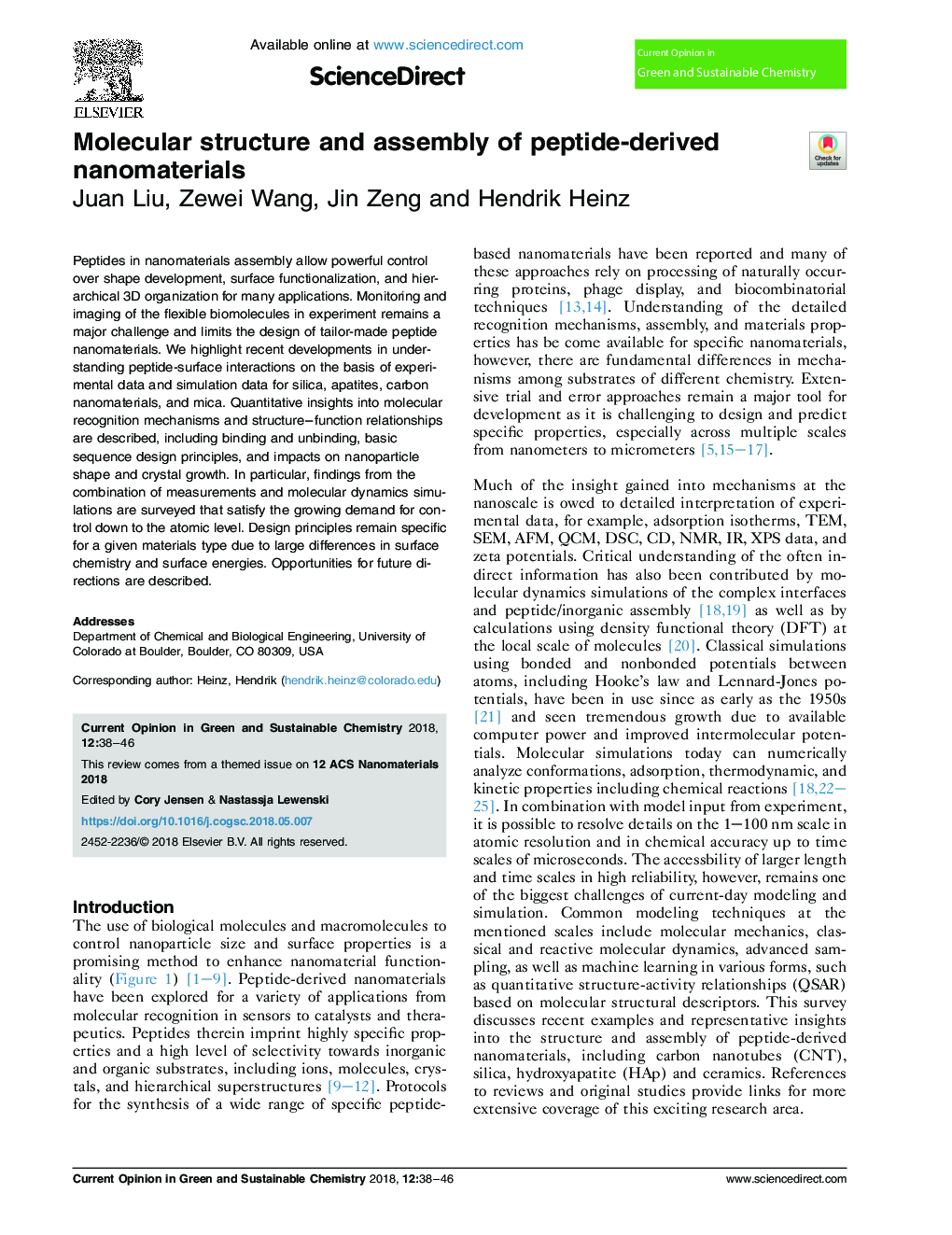| Article ID | Journal | Published Year | Pages | File Type |
|---|---|---|---|---|
| 7695240 | Current Opinion in Green and Sustainable Chemistry | 2018 | 9 Pages |
Abstract
Peptides in nanomaterials assembly allow powerful control over shape development, surface functionalization, and hierarchical 3D organization for many applications. Monitoring and imaging of the flexible biomolecules in experiment remains a major challenge and limits the design of tailor-made peptide nanomaterials. We highlight recent developments in understanding peptide-surface interactions on the basis of experimental data and simulation data for silica, apatites, carbon nanomaterials, and mica. Quantitative insights into molecular recognition mechanisms and structure-function relationships are described, including binding and unbinding, basic sequence design principles, and impacts on nanoparticle shape and crystal growth. In particular, findings from the combination of measurements and molecular dynamics simulations are surveyed that satisfy the growing demand for control down to the atomic level. Design principles remain specific for a given materials type due to large differences in surface chemistry and surface energies. Opportunities for future directions are described.
Related Topics
Physical Sciences and Engineering
Chemical Engineering
Catalysis
Authors
Juan Liu, Zewei Wang, Jin Zeng, Hendrik Heinz,
